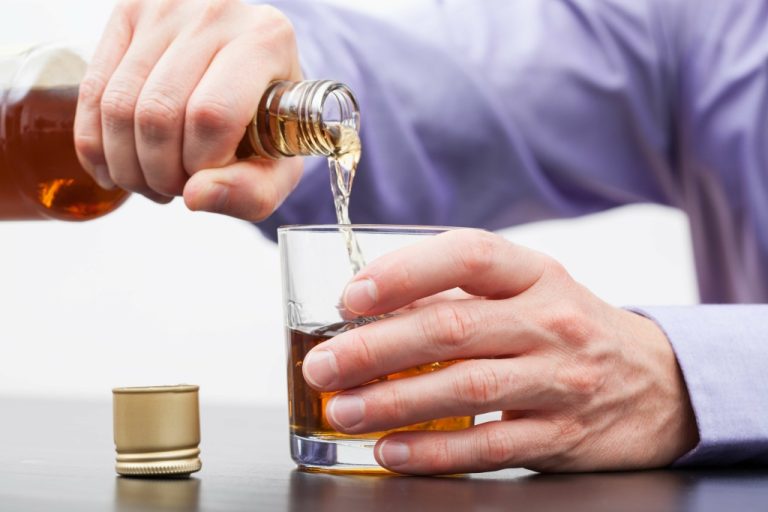Content
- What Are the 5 Alcoholic Subtypes?
- Warning Signs Of Alcoholism
- Finding a Solution for Alcoholism
- Characteristics associated with denial of problem drinking among two generations of individuals with alcohol use disorders
- The Most Common Lies Alcoholics Tell You
- Common Symptoms Of Alcohol Abuse
- Alcoholism
Call your country’s emergency services number (911 in the U.S.) and wait with them for medical help to arrive. Turn the person onto their side to avoid them choking if they vomit. You’re spending less time on activities that used to be important to you because of your alcohol use. Repeatedly neglecting your responsibilities at home, work, or school because of your drinking. For example, performing poorly at work, flunking classes, neglecting your kids, or skipping out on commitments because you’re hung over. Help your loved one by contacting a treatment provider today.

Both families may have different traditions and ways of doing life. Overcomers https://ecosoberhouse.com/ Outreach Inc. addresses alcohol and drug dependency within churches.
What Are the 5 Alcoholic Subtypes?
This group is typically in their late teens or early 20s, and either just of legal drinking age or slightly younger. Many young adult alcoholics are likely college students who are away from home for the first time, and who are surrounded by a culture that promotes and encourages excessive social drinking. Stressful situations, temptation, and toxic friends and environments can lead someone to start drinking again. Your loved one may feel shame about their drinking habits, and may take steps to hide it.

Other physical effects include an increased risk of developing cardiovascular disease, malabsorption, alcoholic liver disease, and several cancers. Damage to the central nervous system and peripheral nervous system can occur from sustained alcohol consumption. A wide range of immunologic defects can result and there may be a generalized skeletal fragility, in addition to a recognized denial in alcoholism tendency to accidental injury, resulting in a propensity for bone fractures. General health care patients from six European countries were asked for reasons why they did not seek help for AUDs. The study showed that lacking problem awareness was the major reason for not seeking treatment, especially in less severe cases that are however prone to physical harm from heavy drinking .
Warning Signs Of Alcoholism
Drinking can offer teens a sense of happiness, so they continue feeding the habit. While there is no exact formula to determining whether or not someone is an alcoholic, symptoms often co-occur. One symptom may snowball into another, fueling additional problems down the road. How COVID-19 Has Impacted Alcohol AbuseAs the COVID-19 pandemic continues, the numbers of alcohol abuse have continued to rise, causing concern across America. The terms denial can be defined as selective ignoring of information.
- As probands’ biological children reached age 18, they were personally interviewed every five-years using SSAGA-based questions.
- Risk is greater with binge drinking, which may also result in violence or accidents.
- About half of this subtype of alcoholics smoke cigarettes, and one-third have a family history of alcoholism.
- It’s important to remain calm when confronting your teen, and only do so when everyone is sober.
- This means that an alcoholic will continue to drink, even when loved onesask them to stop drinkingor get help.
For instance, the detox phase can entail extremely uncomfortable withdrawal symptoms which are best treated in a rehab program. Optimally, the impact of specific criteria should be evaluated while also considering the relationship of denial to drinking quantities, the number of alcohol problems, and whether an individual has alcohol abuse or dependence in DSM-IV. The current analyses focus on inaccurate denial of current AUDs in individuals who report themselves as light or moderate social drinkers. To prepare for the study we searched the literature for specific characteristics of individuals who evidence denial. Marital status and education level did not consistently relate to the probability of denial (Ortega and Alegria, 2005; Rinn et al, 2002), although one study suggested more denial among lower educated individuals . Even more inconsistent results were seen for the relationship to denial for sex, age, socioeconomic status or income (Clark et al., 2016; Fendrich and Vaughn, 1994; Ortega and Alegria, 2005; Rinn et al., 2002; Rosay et al., 2007).
Finding a Solution for Alcoholism
The process of improved physical, psychological, and social well-being and health after having suffered from a substance use disorder. A professionally delivered substance use disorder treatment modality that requires daily to weekly attendance at a clinic or facility, allowing the patient to return home or to other living arrangements during non-treatment hours. Chronic repeated use of opioids can lead to tolerance, physical dependence and addiction. Born out of the principles, practices, and structure of Alcoholics Anonymous , Narcotics Anonymous is an international fellowship for individuals with problematic drug use. NA is a nonprofessional, self-supporting, multiracial, apolitical organization that is open to all ages, offering meetings in over 100 countries. NA is a 12-step program that revolves around its main text, known as theBasic Text. The minor personal slights perceived to occur among people with, or in recovery from, a substance use disorder.
Medical treatment may be necessary to detoxify the body of alcohol and to obtain a fresh start. Since many people with alcoholism endure psychological problems, individual or group therapy may help in overcoming addiction. Compulsive behaviors are prominent in addiction, and people with alcohol addiction often drink whenever and wherever they desire. Feb 19, 2021 Alcohol Intervention How to Cope While Loving an Alcoholic Being in a relationship takes work no matter what the circumstances, and loving an alcoholic adds an entirely different set of challenges to the equation.
Characteristics associated with denial of problem drinking among two generations of individuals with alcohol use disorders
Space constraints do not allow for an expanded examination of the phenomenon of changes in rates of endorsement of AUD criteria as individuals age, but that question will be revisited in a future paper. Table 1 for probands and Table 3 for offspring each first present data for the entire relevant sample and then separately for Group 1 denier and Group 2 non-denier participants. AUD offspring self-ratings were 0% non-drinkers, 24% infrequent/occasional light social drinkers, 58% moderate social drinkers, 13% frequent/heavy social drinkers, 2% problematic drinkers/alcoholics and 3% recovering alcoholics. Using data from two generations of the San Diego Prospective Study , we compared AUD subjects who considered themselves non-problematic drinkers with those with AUDs who acknowledged a general alcohol problem . Comparisons included demography, alcohol-related patterns and problems, drug use, as well as impulsivity and sensation seeking. Variables were first evaluated as univariate characteristics after which significant group differences were entered in logistic regression analyses.
